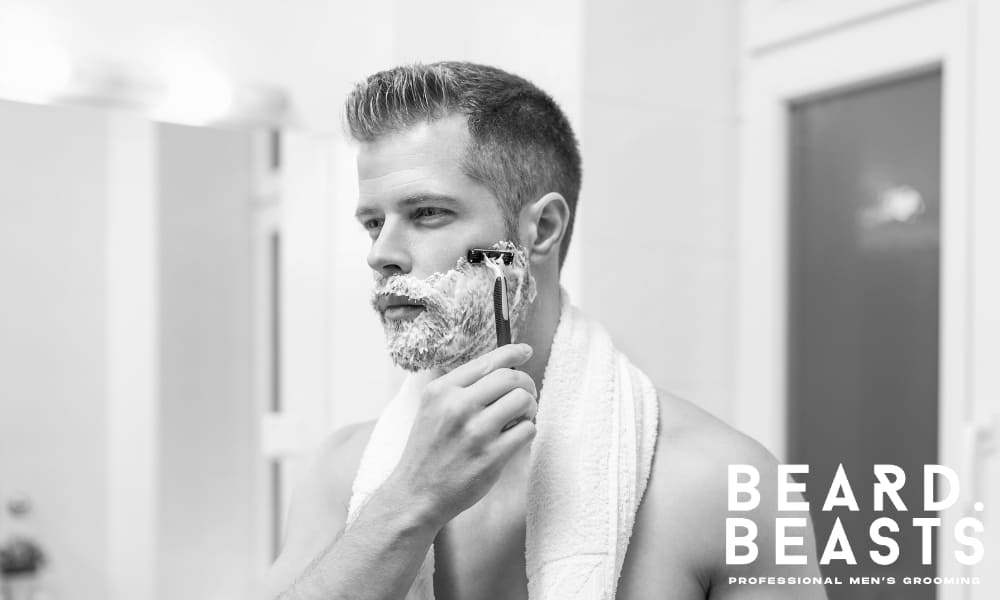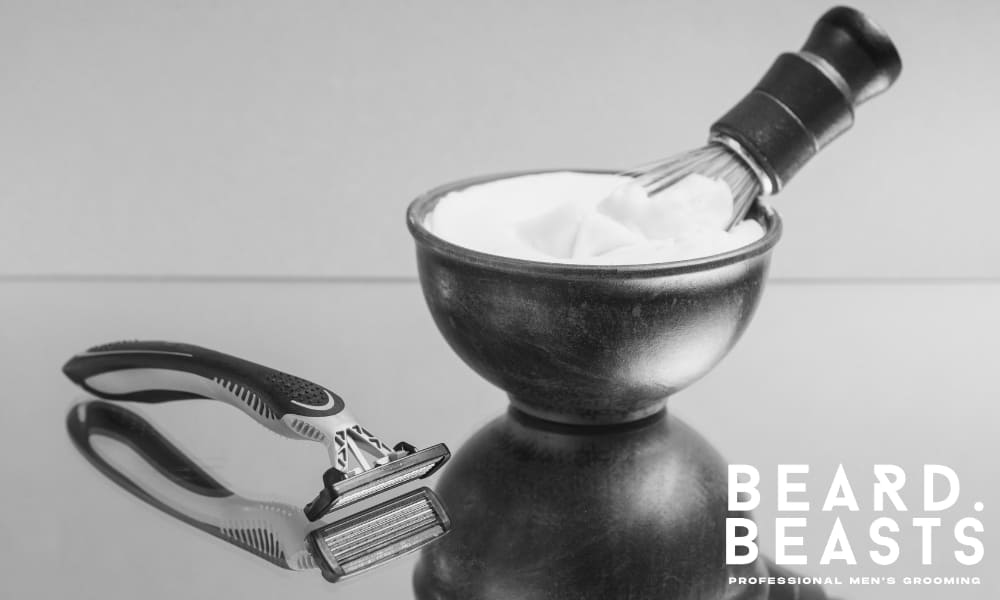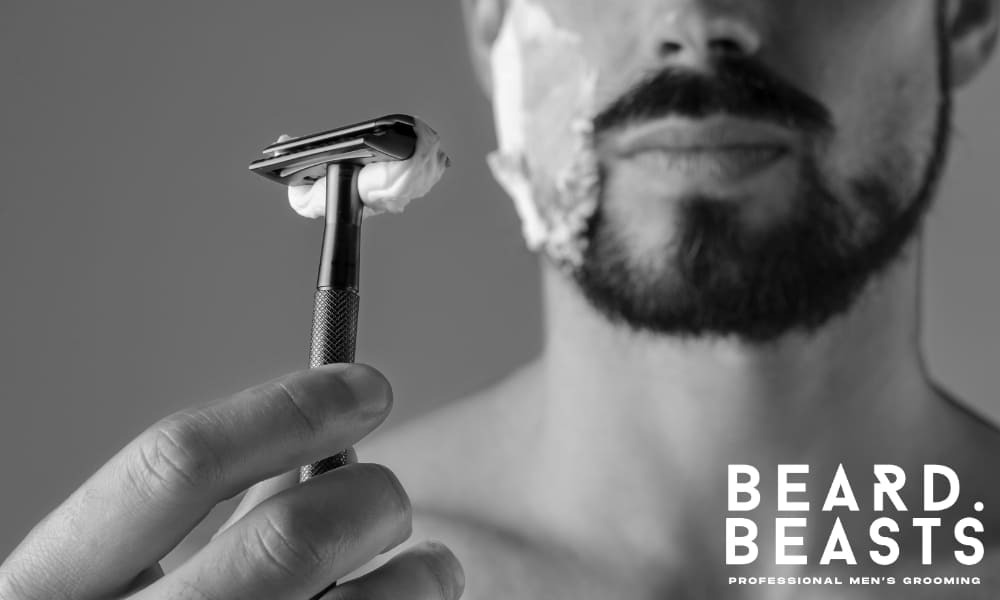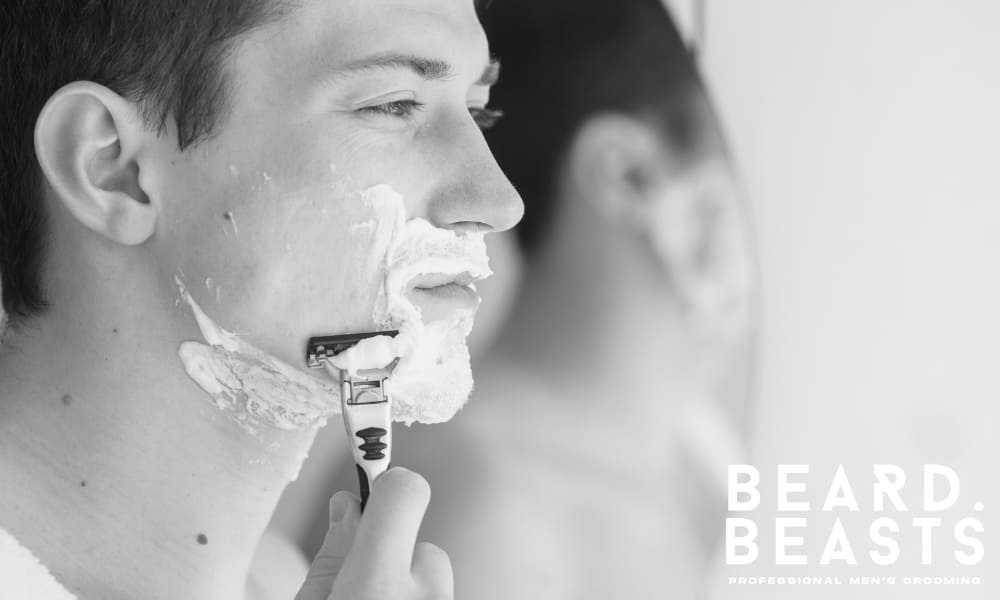What is wet shaving, and why are more men returning to it? In an era dominated by speed and convenience, this traditional technique offers something far more valuable—control, precision, and a superior grooming result.
At its best, wet shaving is less about routine and more about ritual. It reflects a mindset where grooming isn’t rushed, but refined—where quality tools and intentional technique elevate the everyday.
This guide breaks down the tools, the process, and the subtle differences that separate a rushed shave from one that delivers real results. Whether you’re upgrading your routine or exploring this technique for the first time, this is where expertise begins.
What Is Wet Shaving?

Wet shaving is the traditional method of removing facial hair using water, a rich lather, and a manual razor. It’s a deliberate process that softens the beard, protects the skin, and allows the blade to move with precision.
Unlike electric or dry shaving, this approach requires preparation and care. The result is a cleaner finish with less irritation—especially for men with sensitive skin.
Though its roots go back centuries, this technique remains relevant because it delivers. It offers consistency and control that shortcut methods rarely match.
Benefits of Wet Shaving

Wet shaving enhances precision by softening facial hair and conditioning the skin before the first pass. The payoff is a smoother surface with fewer missed areas and better longevity between shaves.
The use of warm water and lather reduces friction, allowing the blade to glide rather than drag. This minimizes razor burn, prevents ingrown hairs, and promotes long-term skin health.
For men with sensitive or reactive skin, the process provides a barrier of protection often absent in modern methods. It turns a basic task into a grooming ritual that supports both skin health and a polished appearance.
There’s also a tactile satisfaction to the method—the feel of the brush, the scent of the cream, the clarity of a clean stroke. It’s more than effective; it’s elevated.
Potential Drawbacks of Wet Shaving
While wet shaving delivers a refined result, it’s not without trade-offs. The process takes more time and demands consistent technique and care.
It also involves multiple tools—from brushes to blades—which can add cost and upkeep over time. For beginners, the learning curve may feel steep compared to the simplicity of electric options.
There’s the need for space and cleanup as well. Unlike dry shaving, this approach requires more setup—and a bit more patience.
Still, for those willing to invest, the comfort and quality it offers are rarely matched. The drawbacks are real, but the rewards speak for themselves.
The Essential Tools for Wet Shaving

A proper wet shave starts with the right tools. Each one contributes to a smoother, more controlled result.
Razor
Your razor is the foundation of the shave. Straight razors offer unmatched closeness but require skill, while safety razors strike a balance between control and ease.
Cartridge razors are convenient and widely used, featuring replaceable multi-blade heads. They’re ideal for speed, though not as refined as traditional tools.
Shaving Brush
A shaving brush builds rich lather, lifts hair, and gently exfoliates the skin. It’s essential for coverage, glide, and overall skin preparation.
Badger brushes retain water best and offer a luxurious feel. Boar brushes are firmer and more exfoliating, while synthetics are cruelty-free and reliable.
Shaving Cream vs Shaving Soap
Shaving cream creates quick, cushiony lather and is well-suited to beginners. Whereas shaving soap is denser, lasts longer, and rewards more practiced technique.
Creams emphasize ease and comfort. Soaps deliver tradition and control.
Pre-Shave and Aftershave
Pre-shave oil softens hair and adds a layer of protection. It reduces drag and helps the blade move efficiently across the skin.
Aftershave soothes and refreshes post-shave skin. Choose a balm for hydration or a splash for a crisp, toning finish.
Alum Block or Styptic Pencil
These tools stop minor nicks and calm the skin. They add a finishing touch that reflects care and precision.
Often overlooked, they quietly complete the routine. A small addition that elevates the whole experience.
How to Wet Shave: A Step-by-Step Ritual

Knowing what is wet shaving is only the beginning—mastering the technique is what delivers real results. A quality shave depends on preparation, control, and proper aftercare.
Step 1: Prepare the Skin
Every routine starts with warm water and clean skin to soften hair and open pores. This reduces resistance and prepares the surface for a smooth stroke.
Apply pre-shave oil to condition the hair and protect the skin. This added layer minimizes friction and supports a more comfortable pass.
Step 2: Build the Lather
An essential part of what makes this technique effective is the lather. Using a damp brush, work your soap or shaving cream into a thick, creamy foam.
Apply it evenly in circular motions, lifting the hairs and coating the skin. This creates a barrier that cushions each stroke.
Step 3: Shave with Precision
Wet shaving technique centers on light, short strokes with a sharp blade held at the proper angle. Shave with the grain first to reduce irritation and prevent razor bumps.
Rinse the blade often to avoid buildup and maintain clean lines. For a closer result, re-lather and go across or against the grain on a second pass.
Step 4: Rinse and Recover
After shaving, rinse with cool water to close the pores and refresh the skin. This clears residue and calms any potential inflammation.
Pat your face dry with a clean towel, then apply aftershave to hydrate and protect. This final step seals the result and restores balance.
Tips to Refine Your Wet Shaving Routine

Mastering wet shaving doesn’t end with the blade—it’s elevated through habit and technique. These tips take your routine from good to exceptional.
Maintain Your Tools
Rinse your razor and brush thoroughly after each use. Let them air dry fully to prevent buildup and extend their lifespan.
Replace blades every five to seven uses—or sooner if you notice drag. A sharp blade delivers cleaner lines and minimizes irritation.
Prevent Irritation and Ingrowns
Exfoliate one to two times a week to remove dead skin and free trapped hairs. Avoid overdoing it, which can lead to sensitivity.
If irritation occurs, apply a cool compress followed by an alcohol-free balm. Consistent prep and hydration are your best defense.
Adjust for Your Skin Type
Sensitive skin benefits from pre-shave oil and hydrating cream. Oily skin responds better to lightweight, cleansing formulas.
Choose the razor and blade that suit your needs. The right pairing improves comfort without compromising closeness.
Take Your Time
This techique should never feel rushed. Precision always outperforms speed.
Deliberate steps lead to better results. It’s grooming with intention—not just convenience.
Frequently Asked Questions
These frequently asked questions offer expert answers to help you refine your technique and get the best possible results.
What is wet shaving?
It’s a traditional method of shaving that uses water, lather, and a manual razor to soften hair and protect the skin during each pass. It’s designed to deliver a closer, smoother shave with less irritation compared to dry or electric methods.
Is wet shaving better than dry shaving?
Yes this method is generally better than dry shaving if your goal is precision, comfort, and skin health. The process reduces friction, softens hair, and minimizes razor burn—making it ideal for sensitive or reactive skin.
How do you wet shave at home?
To wet shave at home, begin by cleansing your face with warm water and applying pre-shave oil. Build a rich lather using a brush and shaving cream, then shave with a sharp razor using short, controlled strokes with the grain.
Is it OK to wet shave every day?
Yes, every day is safe if your skin can tolerate it and you’re using proper technique. Focus on prep, sharp blades, and post-shave care to avoid irritation from daily shaving.
What is the alternative to wet shaving?
The primary alternative is dry shaving, which typically uses an electric razor without water or lather. While it’s faster, it often sacrifices closeness and can be harsher on the skin.
Is wet shaving better than electric?
Wet shaving is better than electric shaving for achieving a closer result and reducing skin irritation. It takes more time but offers greater control, better exfoliation, and a refined grooming experience.
Final Thoughts
Understanding what is wet shaving goes beyond the basics—it’s about choosing precision over convenience and turning a routine into a ritual. When done properly, it offers cleaner lines, improved skin health, and a more elevated grooming experience.
From the tools you use to the care you take, every detail matters. With consistency and refinement, the process becomes second nature—sharper, smoother, and undeniably better.
Whether you’re starting out or sharpening your craft, this technique rewards intention. Invest in it, and it will return results that speak for themselves.





